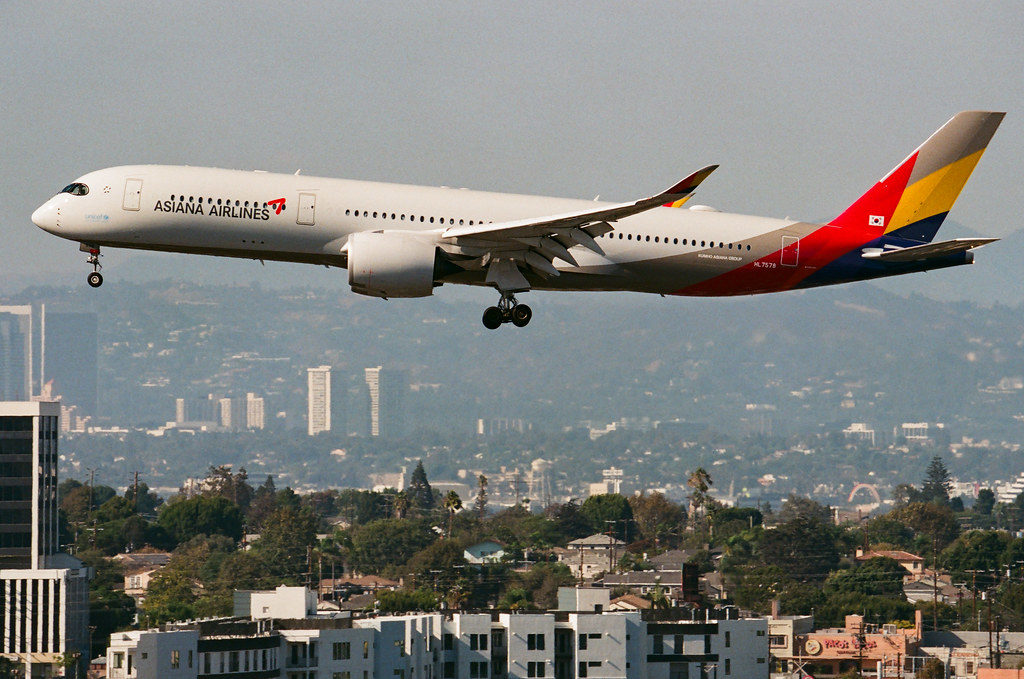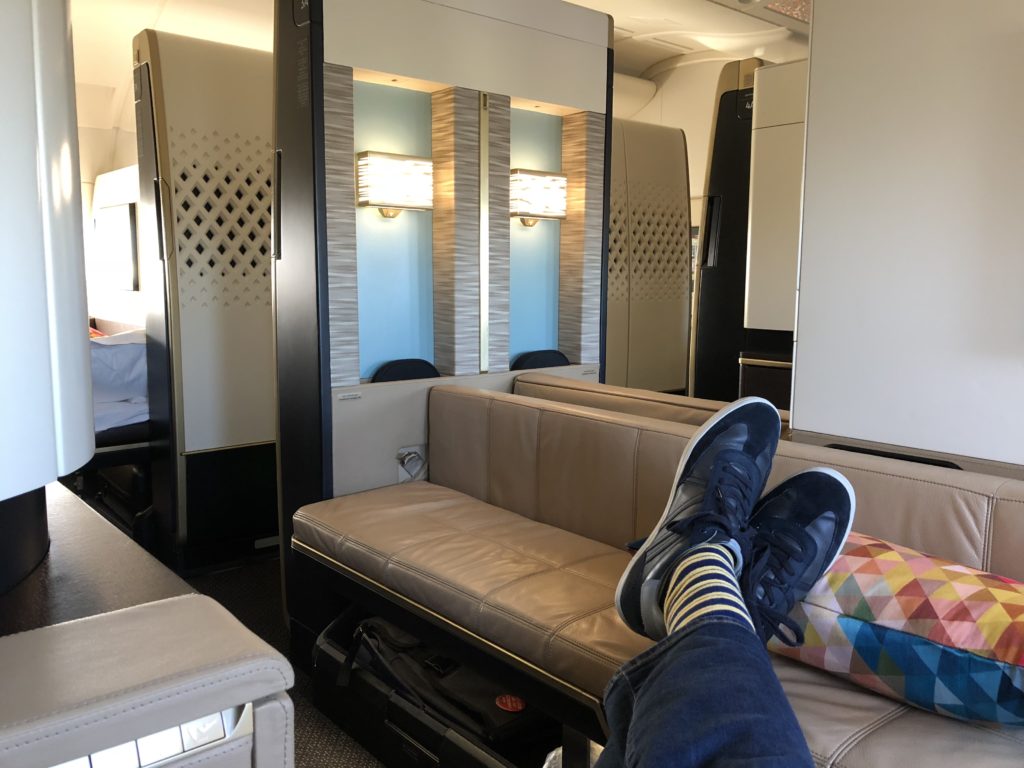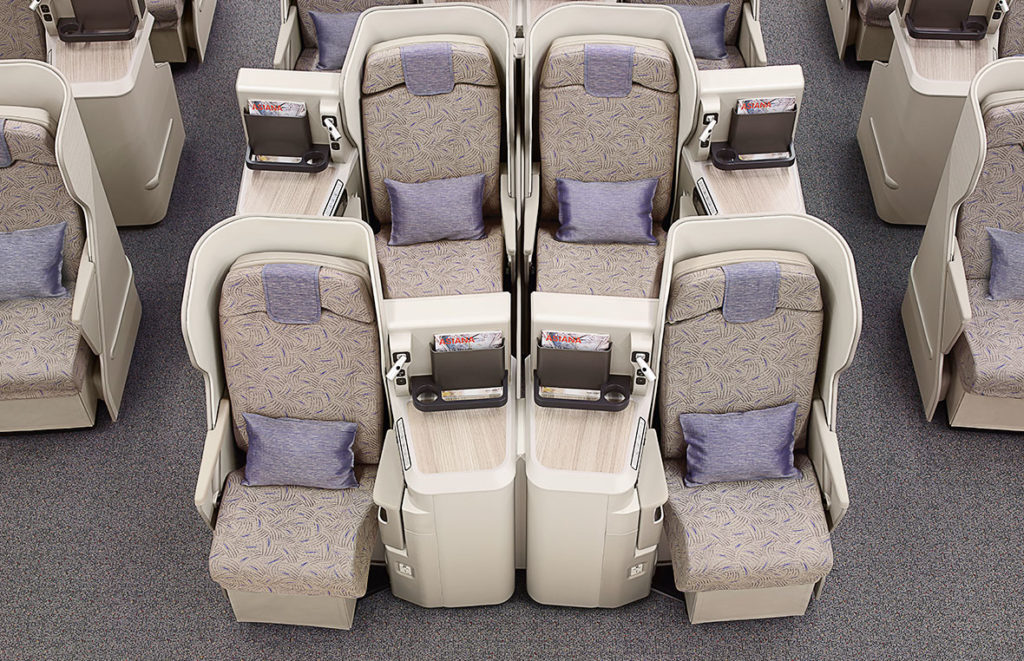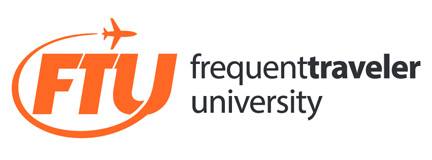The Best Mileage Program You’ve Probably Never Heard Of
What makes a great frequent flyer program? For some it’s value of the program’s miles. For others, it’s the ease of redemption. Maybe it’s the perks that come with elite status. The unfortunate reality is, you’re probably not going to get one program that checks all the boxes.
Let’s take Alaska Airlines Mileage Plan, for example. It’s one of my favorite frequent flyer programs. If based on the West Coast, chances are you’ve got great connectivity. However, if you’re based on the east coast, you probably won’t get to enjoy many of Alaska’s elite benefits. That’s not to say that the program is useless for people in other locations. From a mileage perspective, it’s quite the opposite. You can unlock some incredible experiences using Alaska miles on partners. Options like Emirates First Class, Cathay Business Class, or Qantas First Class are just a few great values.
If you’re a regular reader of this blog, you’re probably already pretty familiar with Alaska Airlines’ Mileage Plan program though. Today, I want to introduce you to a program you probably know little-to-nothing about – Asiana Club.
What is Asiana Club?
For those of you not familiar, Asiana is Korea’s second largest airline. The carrier is also a member of the Star Alliance, meaning they’re partners with airlines like United, Air Canada, Lufthansa, Swiss, and ANA.
Asiana’s frequent flyer program is known as Asiana Club (makes sense, right?). Unfortunately, Asiana miles are pretty difficult to come by unless you fly on Asiana and their partners. The airline doesn’t partner with any of the major US credit card issuers. However, they do partner with Marriott Bonvoy. You can transfer 60,000 Marriott points for 25,000 Asiana Club miles (20,000 miles plus a 5,000 mile bonus). If you want to earn Asiana miles without flying, Marriott is pretty much your only way to do so.
Not all miles are created equally
Some people, right or wrong, assume the only way to use an airline’s miles are directly with that airline. In most cases, that couldn’t be further from the truth. You may not realize, but you don’t have to use American’s miles to fly American. The same goes for all the other major US airlines. To unlock the true potential of an airline’s frequent flyer program, you’ll want to look to partners. Sure, you could fly American using American miles (if you can find award space), but wouldn’t you rather fly in Etihad’s Apartments? It’s often with partners where you can find outsized value. It’s part of why we love Alaska’s Mileage Plan so much.
All of the major airlines have partnership with other airlines. Does that mean one American mile is worth the same as one Delta Skymile? No! To give you an example of how not all miles are created equally, let’s look at some of the best options using Asiana Club miles and see what they’d cost using other mileage programs.
- Lufthansa First Class between North America and Europe
- Asiana: 50K
- United: 110K
- Etihad Apartments between Europe and the Middle East
- Asiana: 40K
- American: 62.5K
- Business Class between North America and Europe – 40K
- Asiana: 40K
- American: 57.5K
- United: 60K
- Delta: (*puts pinky to corner of mouth*) One hundred million Skymiles. Muahahaha!
- Business Class to southern South America (like Argentina or Chile)
- Asiana: 35K
- United: 60K
- American: 57.5K
- Business class from North America to South Africa
- Asiana: 60K
- United: 70K
- American: 75K
As you can see, Asiana miles are significantly more valuable than the major US carriers. That’s not to say that there isn’t value in those programs. Just that there is significantly more bang for your buck with Asiana. If you’re sitting on a huge stack of Marriott Bonvoy points, it’s worth considering Asiana Club before transferring them to another airline.
Elite Status
There’s a decent chance you’re wondering, “What the heck am I going to do with Asiana elite status? I never fly them.” Well, let me show you how holding elite status with another airline can at times, be even more beneficial than holding it with a domestic carrier.
We’re going to focus on Asiana Diamond status, as that’s where the real benefits start to come in. With Asiana Diamond status, you’ll also receive Star Alliance Gold Status. Star Alliance Gold comes with some great perks, such as: priority check-in, priority boarding, extra baggage allowance, and airport lounge access.
The most exciting perk is undoubtedly airport lounge access. With Star Alliance Gold status, you and a guest will be able to access Star Alliance business class lounges worldwide. This includes United Club lounges on domestic itineraries. United won’t even let their own Gold members access the lounge on domestic itineraries, so this is a huge perk if you fly United.
Unfortunately, the elite mileage bonuses are pretty insignificant. Bonuses range from 5% for the lowest level to 15% for the highest level. Diamond status will only earn an extra 10%, so I don’t view this as a huge benefit.
So, how do I qualify for Asiana Diamond status?
Compared to other airlines’ mid-tier status, Asiana elite status is pretty easy to earn and keep. Asiana’s mid-tier diamond status only requires 40,000 miles to reach and lasts for two years. Once you have it, it only takes 30,000 miles to retain status. There’s no spending requirement either! Compare that to the Big Three US carriers that require you to fly 50,000 miles and spend a minimum of $6,000.
Challenges with Asiana Club
While Asiana Club has some incredible redemptions, their miles are pretty tough to come by. As I mentioned before, they aren’t transfer partners of any of the major credit card issuers, so you’ll only be able to earn miles by flying Asiana or their partners. Their premium cabin and elite bonuses are relatively tame too, typically maxing out at 150%. There certainly aren’t any 625% mileage earning opportunities there.
This is part of how they’ve been able to keep their redemptions so lucrative. Instead of flooding the market with Asiana miles, they’ve kept the supply limited. There are fewer Asiana miles floating around than Delta Skymiles. Because the market isn’t flooded with Asiana miles, there are fewer people willing of paying sky-high rates. This allows Asiana to keep their redemption rates low.
Final Thoughts
As far as frequent flyer programs go, Asiana Club is really a hidden gem. They have an incredibly lucrative award chart and elite status is relatively easy to achieve and maintain. Unfortunately, I don’t fly Star Alliance carriers very often. Otherwise, Asiana might be one of my go-to frequent flyer programs.











November 26, 2019
They aren’t as great as they sound. They charge full fees for that LH F award. Their miles expire from the date you earn them and cannot be extended. They do not offer first class on their wo6n aircraft any longer.
November 26, 2019
Just like Korean Air, Asiana miles expire after 10 (or 12 if you’re elite) YEARS. Better than JAL or ANA where you only have 3 years to use it or lose it.
November 26, 2019
FYI, there is a Bank of America Asiana Credit Card.
https://www.bankofamerica.com/credit-cards/products/asiana-airlines-credit-card/
November 27, 2019
Thanks for the heads up, John. You learn something new every day 🙂
November 26, 2019
What? No mention of family sharing? Just like Korean Air, Asiana also offers family sharing so you can pool your miles among eligible family members.
November 27, 2019
How precarious is Asiana’s financial position? I know that earlier this year there was talk that Asiana was in pretty bad financial situation and in rather desperate need of a rescuing.
November 27, 2019
Since earlier this year, things have actually improved quite a bit for Asiana. They’re is currently in the process of selling to new majority stakeholders, which should give the airline a nice cash windfall, as well as stronger financial support. They also received $1.4bn from creditors in the spring. The company still has a ton of debt, but they’re in a much better financial position now than they were at the beginning of the year.
November 27, 2019
Does the elite mileage bonus apply to partner flights or only flights in Asiana’a own metal? I know it’s a small bonus but it still adds up. I’m thinking of switching from United.